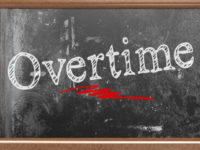So, you are considering selling your business. Every small-business owner should have an exit strategy, even if retirement or another career shift is not imminent. The time to begin planning is two to five years before you plan to sell, because that is the time it may take to arrange the transaction in a way that benefits you most.
Why does planning for selling your business take so long? There are three big reasons.
Firstly, you obviously want to get the best price, which means being savvy about the market. An objective viewpoint can be very useful.
Second, to get that price you may need to tidy up your balance sheet and assess what it is about your business that is truly valuable. Perhaps it’s the income; or alternatively it could be intellectual property, real estate, your expertise during a transition period or even a stellar management team. It may take some preparation to preserve these less obvious sources of value.
Finally, remember that any liabilities you may have incurred in building your business will not necessarily transfer to the new owner at the time the assets do. Some careful legal drafting may save you quite a bit of grief.
Watching the market
Some people recommend working with a business broker prior to selling your business to help you assess your business’ value and connect you with potential buyers. Brokers tend to charge from seven to ten percent in commissions and additional for marketing costs. As a business owner you will need to weigh up the time and expense of using a broker rather than arranging a private sale.
What is your business worth?
There are three basic approaches to valuing a business. A holistic approach would involve a little bit of all three. The first involves simply subtracting the liabilities from the value of assets. Keep in mind though, that there is a significant difference between selling a business at liquidation value – selling tangible assets, like tables, chairs and computer equipment – and selling it as a going concern.
The second looks at the sum of pretax earnings, owner’s salary, interest expense, depreciation and any personal expenses. That sum is then multiplied by a factor between 0 and 3 to predict future performance. The secret is in the factor. For small businesses that usually comes in somewhere between 1.5 and 2.5.
The third involves looking at recent sales of similar businesses. This may involve assessing what kind of buyer will find your business attractive from a strategic point of view. This is an opportunity to evaluate some of those intangible factors that may make your business especially valuable to the right buyer.
Rolf Howard, Managing Partner, Owen Hodge Lawyers
















